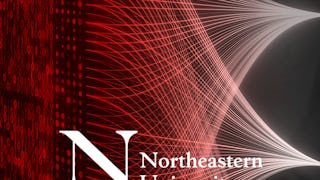This course introduces the fundamental concepts and emerging technologies in database design and modeling, database systems, data storage, and data governance. It presents a balanced theory-practice focus and covers entity relationship model and UML model, relational model, relational databases, Structured Query Language, and two flavors of NoSQL databases in MongoDB and Neo4j graph database. It also includes a brief introduction to big data management including hadoop, MapReduce, and Apache Spark. This course provides the theory and applications of database management to support data analytics, data mining, machine learning, and artificial intelligence.

Enjoy unlimited growth with a year of Coursera Plus for $199 (regularly $399). Save now.

Skills you'll gain
Details to know

Add to your LinkedIn profile
8 assignments
See how employees at top companies are mastering in-demand skills

There are 4 modules in this course
In this module, you'll explore the foundational principles of database management, focusing on the differences between file-based and database approaches to data management. You will learn about the key elements of a database system and the advantages of using database management systems (DBMS) to organize, store, and manipulate data. Through this module, you'll develop skills in database design and administration, gaining a deeper understanding of how DBMS enhances data management and supports professional work in fields like data analytics.
What's included
3 videos7 readings2 assignments2 discussion prompts
This module covers the architecture and categorization of Database Management Systems (DBMS). Here, you will learn the key components of DBMS architecture, including the query processor and storage manager, and how they interact to manage data. You will also learn to categorize DBMSs based on factors like data models, architecture, and usage, highlighting their characteristics and real-world applications. This module also provides resources and prompts for discussion to deepen understanding of DBMS types and their use cases in data management.
What's included
5 readings2 assignments1 discussion prompt
In this module, you'll explore the foundational steps of database design, focusing on conceptual data modeling using the Entity Relationship (ER) model. You will learn how to gather business requirements, identify key entity and relationship types, and develop a conceptual data model. This model serves as the blueprint for database design before transitioning to logical and physical designs. You'll also examine the limitations of the ER model and how to address them. By the end of this module, you will understand how to translate real-world business processes into a clear, organized conceptual data model.
What's included
1 video5 readings2 assignments
In this module we will learn three additional semantic data modeling concepts: specialization/generalization, categorization, and aggregation. These concepts enhance and extend the ER model discussed in the previous module. We will introduce an alternative conceptual model: the Unified Modeling Language (UML) class diagram. The UML is a modeling language that assists in the specification, visualization, construction, and documentation of artifacts of a software system. The UML can offer case diagrams, sequence diagrams, package diagrams, and deployment diagrams, etc. Here we use the UML for conceptual data modeling.
What's included
1 video6 readings2 assignments
Instructor

Offered by
Explore more from Data Analysis
 Status: Preview
Status: PreviewNortheastern University
 Status: Preview
Status: PreviewNortheastern University
 Status: Free Trial
Status: Free TrialBoard Infinity
Why people choose Coursera for their career





Open new doors with Coursera Plus
Unlimited access to 10,000+ world-class courses, hands-on projects, and job-ready certificate programs - all included in your subscription
Advance your career with an online degree
Earn a degree from world-class universities - 100% online
Join over 3,400 global companies that choose Coursera for Business
Upskill your employees to excel in the digital economy
Frequently asked questions
To access the course materials, assignments and to earn a Certificate, you will need to purchase the Certificate experience when you enroll in a course. You can try a Free Trial instead, or apply for Financial Aid. The course may offer 'Full Course, No Certificate' instead. This option lets you see all course materials, submit required assessments, and get a final grade. This also means that you will not be able to purchase a Certificate experience.
When you purchase a Certificate you get access to all course materials, including graded assignments. Upon completing the course, your electronic Certificate will be added to your Accomplishments page - from there, you can print your Certificate or add it to your LinkedIn profile.
Yes. In select learning programs, you can apply for financial aid or a scholarship if you can’t afford the enrollment fee. If fin aid or scholarship is available for your learning program selection, you’ll find a link to apply on the description page.
More questions
Financial aid available,


